Podcast 376: Paint vs. Solid Stain, Crawlspace Ventilation, and Sizing Support Columns
Rob, Colin, and Patrick hear from listeners about rainbow pigments and bargain power tools before taking listener questions about exterior paint jobs, crawlspace ventilation fans, and calculating the length of basement lally columns.
Follow the Fine Homebuilding Podcast on your favorite app. Subscribe now and don’t miss an episode:
 |
 |
Help us make better episodes and enter for a chance to win an FHB Podcast T-shirt:
www.finehomebuilding.com/podcastsurvey
Jim has a suggestion for Dyami’s rainbow cedar shingles. Ross has thoughts on tropical hardwoods. Jonathon shares insights on VOCs and bargain power tools. Joel asks if he should use paint or solid stain for his next whole-house paint job. Tom needs a small fan for crawlspace ventilation. Another listener wants to know the exact length of a basement lally column before the basement slab and first-floor joists are in place.
Editor Updates:
- Patrick’s truck woes
- Colin’s bathroom remodel
- Rob’s “new” tablesaw
- Jeff’s fake clock
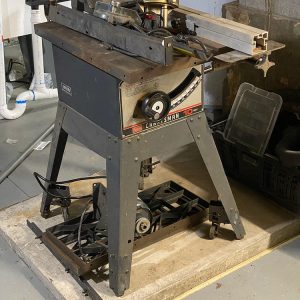 |
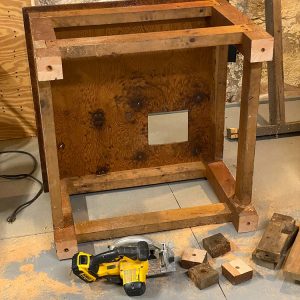 |
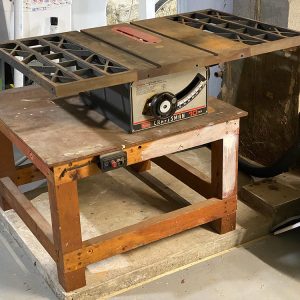 |
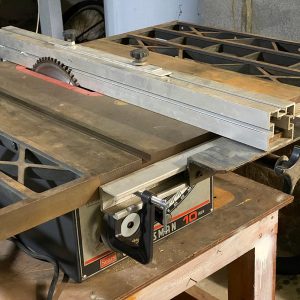 |
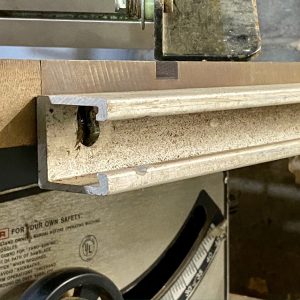 |
 |
Listener Feedback 1:
Landscape architect Jim Collins writes: Hi Patrick, Was catching up and heard the question in episode 368 from Dyami. It made me think of this company’s wares: solventfreepaint.com They have a great range of products and specifically that great Falu Red colour for the barn lovers out there that are all based with Organic Linseed Oil. I personally have not tried them, but I would say the history of Sweden would trump my lowly experience anyway. Keep up the great questions and even better answers!
Listener Feedback 2:
Ross writes: Hi Fine Homebuilding podcast crew, I was just listening to podcast 364 while wrapping up a kitchen install on my job site. The podcast keeps me going on many long days as a solo carpenter in VT. On podcast 364, there was mention of using IPE as a possible building material. I would just like to elaborate that using any rainforest products has major climate implications, and that products like IPE should have big red warning labels before use. Thanks again, Longtime listener, Ross
Related Links:
Listener Feedback 3:
Jonathan from Silver Spring, MD writes: Hello. It’s a been a while and I have a few updates for the crew.
1) You’ve covered air quality and VOCs in the podcast and in the magazine. Geeks like us might find it interesting to know that equipment designed for space cannot be made with any VOCs. The reason? In a near-zero atmospheric-pressure environment, the VOCs release suddenly and could condense on the surface of a lens of sensitive electronics. Even microscopic condensation could interfere with precise measurements of scientific instruments or signals from communications equipment. Good luck servicing it up there.
2) You’ve also discussed which power tools are a must-have for DIY’ers. I’ve slowly accumulated a hodgepodge of power tools from various brands, but recently stumbled upon a great website to buy a wide assortment of affordable power tools from a reputable family of brands. You’ve mentioned Techtronic Industries before. Techtronic owns major brands like Ryobi and Ridgid among others. They sell “certified pre-owned” (read: returned) and “factory blemished” tools direct to consumers at DirectToolsOutlet.com at discount. They even have a physical outlet store in South Carolina. The “blemish” is usually a misprint on the packaging or a superficial dent or scratch—nothing that would affect the performance. Everything functions perfectly on the router, and planers I purchased from them. It’s a great place to look for anyone on a budget.
3) On the topic of concrete and global warming. After two years of lobbying for sidewalks, my county just finished installing more than a mile of new sidewalk in my neighborhood. I watched with glee as truck after truck poured concrete into the forms. They had to remove 47 trees but the County planted 140 new street trees to make up for the loss. For a time, I was simultaneously the most hated and beloved person in my community. I still get great satisfaction seeing the sidewalk opponents enjoy a nice walk on the new sidewalk.
Until next time…
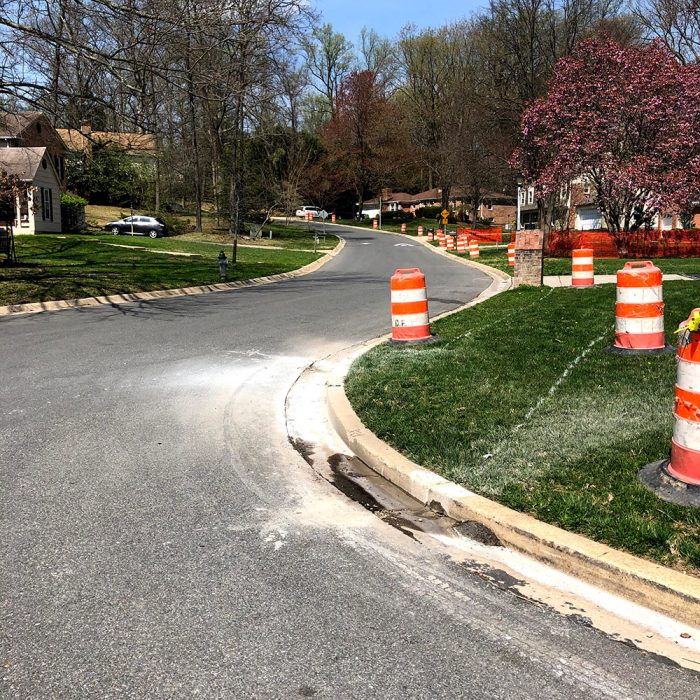 |
 |
Related Links:
Question 1: Should I paint or solid-stain my cedar siding?
Joel writes: Greetings Fine Homebuilding Podcast: First off, thank you for the quality information and content you produce—the whole crew is absolutely top notch.I am a skilled DIY-ER. I have skills and experience in almost all facets of remodeling. However, my next project is something I have not tackled before. I will be painting my 1981 ranch home in Cincinnati, OH. The home is clad with vertical cedar channel siding on the front and horizontal cedar clapboard siding on the sides and rear of the home. I have reviewed all the literature in your newly curated painting section on the website (it was fantastic BTW). I am confident in all the prep and application steps, but I am struggling in selecting the proper material to paint the house with. Sadly, I do not have any remaining material from when the home was last painted. As best I can guess based on conversations with my neighbors, the home was last painted 10 years ago. I had no idea if the home was covered in a solid stain or flat paint material, and from the research I can find, I do not believe there is a way to tell what material was used.
Does it matter if I use paint or solid stain? As I understand it, there is minimal difference between the two products, but there is some. The home will be painted a darker gray color. Is one of those products preferred when painting a darker color? If I use paint, I am planning on going with a high-end product that provides UV protection and mildew resistance, along with a lifetime product warranty.
I attached pictures of the siding and the very small area that I am seeing peeling. I attached this one because maybe it will help you determine what type of product was initially used on the home. Please help – what would a pro painter do – paint or solid stain?
 |
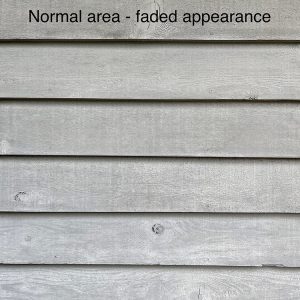 |
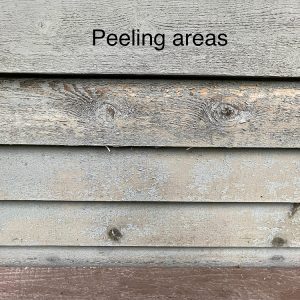 |
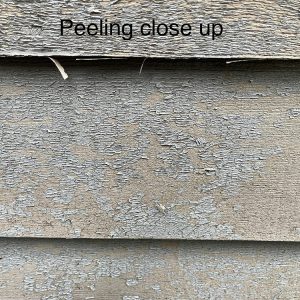 |
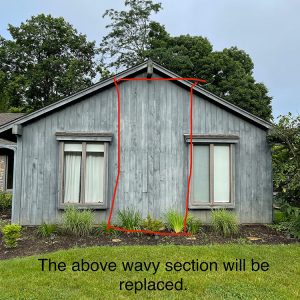 |
Also, I have attached a picture with a red sectioned off area. This siding is wavy and uneven. As you can see, in many areas they joined two shorter lengths of siding together. These areas are coming apart. I have located the exact channel siding that was used originally. I am going to replace these boards with full length pieces to avoid this issue. The siding is currently nailed over 1/2″ polyiso sheathing – there is no rainscreen. There is horizontal 2×4 blocking between the joists to provide the 24″ on center nailing surface. Do you think it would be worth it to pull all the vertical siding off on this gable end and add a rainscreen? I do not want to build it up with much thickness so I would use Benjamin Obdyke Slicker Classic. Considering these gable ends of the home have minimal roof overhangs, are fully exposed to the sun, and will have a darker gray paint color – would it make sense to add this extra labor step? Will this detail increase durability and the assembly? This task is well within my skill set and we plan on being in this home for another 40 years – if that impacts your decision. Thanks for the expert advice, Joel
Related Links:
- What’s the Difference: Exterior Paint vs. Solid-Body Stains
- 10 Tips to Paint Like a Pro
- Prime Cedar Siding to Stop Bleeding Tannins and Water Stains
Question 2: Is the AirTitan T3 model a good choice for a crawlspace fan?
Tom writes: Thanks for taking on my question on this subject in podcast 368. I was dumbstruck when I heard there had been a very recent article on this subject. It is with great shame that I acknowledge I had not read issue #299 as clearly pointed out by Matt Millham. In my dog-ate-the-homework-like defense, I can only say that I looked for the issue in my stack of FHB magazines and found it missing. I then remembered it came while I was working on installing mini splits for an impatient resident on the very project I wrote to you about. I had set it in a safe place for a later read and, of course, within days it was covered up. Sigh!
Anyway, thanks for going on and answering the questions definitively. Along with reading all of issue 299 I also saw in issue 252 that Martin Holladay recommends 1 cfm per 50 sq feet of crawl space to minimize air drawn into the conditioned space ( I’m a little surprised it’s not measured in cubic feet), in my case that would equal 17 CFM. In looking around for a continuously rated fan under 20 cfm, I found very little. I did find this one: an AirTitan T3 model that has a controllable speed and can throttle down to 12 cfm at its lowest setting.
Do any of you have experience with this unit? Is there a better one in the same volume of airflow range? As always, Thanks for your entertaining and helpful comments.
Best regards, Tom
Related Links:
Question 3: Can you shim new construction Lally Columns?
TTF5003 from FHB forum writes: This might be a pretty basic question, but how do you handle not knowing exactly what the Lally column height will be as far as ordering materials? I’m building a cabin this summer and I’m getting 8’2” Superior Walls with precast column footers whose tops should be set at the same height as the bottom of the wall. So, the column heights should be 8’2” with 1 ½” still plate so 8’ 3 ½”. The beam they will be holding up will be in a pocket and is 4 2x8s. So it should be 8’ 3 ½”- 7 ¼”= 7’ 8 1/4”
So that puts me at a Akron 206 which is 7′ 6″ – 7′ 10″, $113 and has a long lead time from Lowes. If I go with an Akron 205 it is 7′ 3″ – 7′ 7″ which is $79.98 and available in stock. If I go with the shorter one, is any type of shim acceptable by code? What material is best and where should I put it, between the column and the footer or the column and the beam? Thanks for any help.
Related Links:
End Note: Never mind Kiley’s bowling alley dance floor…
Man finds more than 150 bowling balls mysteriously buried beneath his house
Here’s something that you definitely don’t read about every day: a man has discovered more than 150 bowling balls buried beneath his home in Michigan.
33-year-old David Olsen discovered this bizarre anomaly when he was demolishing the back steps of his house on 1st July and discovered the first of many mostly black bowling balls buried in sand behind some cinder blocks. After removing that one, he found that there were more and more bowling balls buried beneath his house. Olsen told US Today that there was an “entire gridwork” of balls beneath his house but he was happy as “it’s a little easier to roll bowling balls out of the way than to move the sand and figure out where to put all that.”
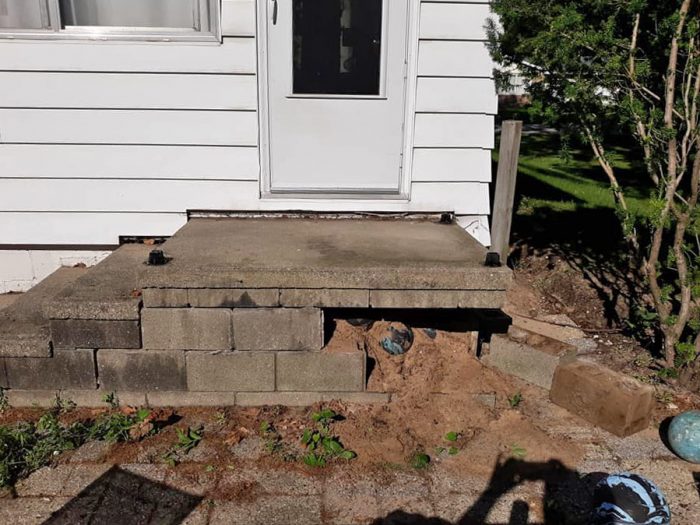 |
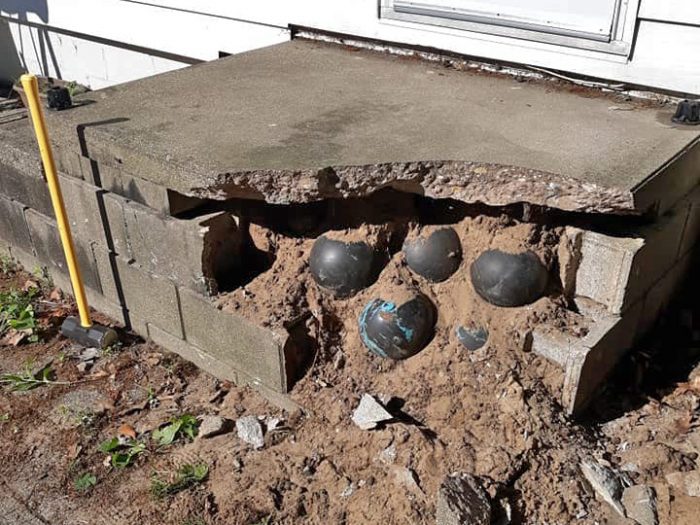 |
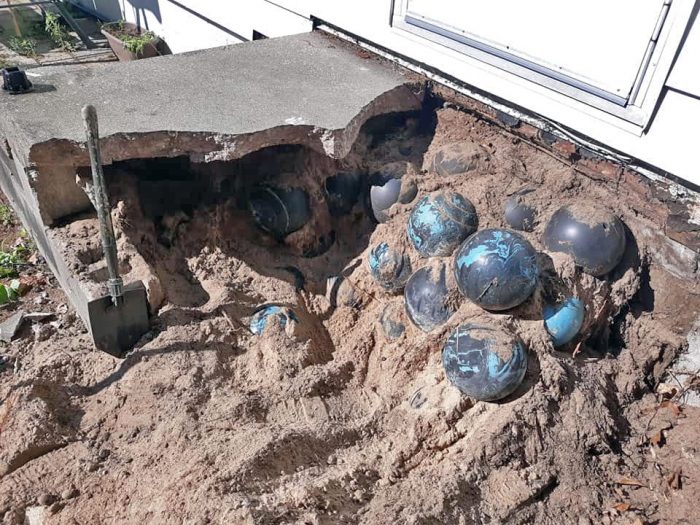 |
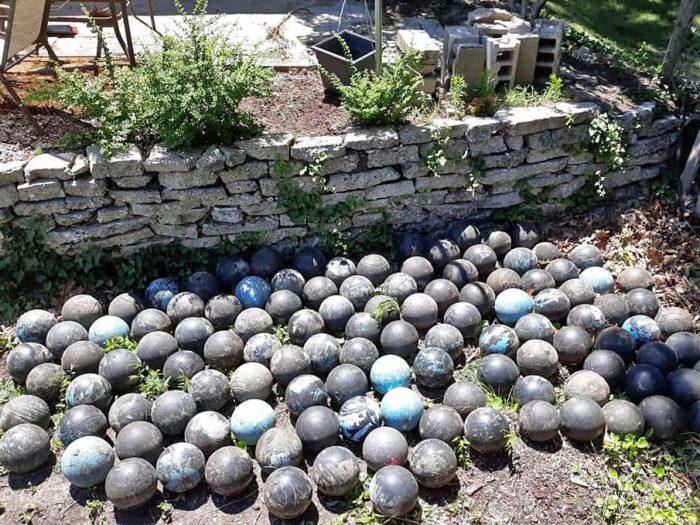 |
Olsen, who shared his findings on Facebook, had initially found 158 bowling balls but has since reportedly found two more, bringing the current total up to 160. Olsen believes that there are plenty more bowling balls down there but has finished working in the area that he needed. “I’ve dug down about 2 feet lower than when I found my last ball and I think it’s pretty much cleared out in that section,” he added.
All of the balls were made by Brunswick Bowling Products and after contacting the company and giving the balls serial numbers they were able to confirm that they were made in the 1950s and the Olsen was free to dispose of them. Although this may sound like a bowler’s paradise the majority of the balls have had two spiral grooves cut into them which would make them impossible to use on any lanes. You’re more likely to end up in the gutter than get a strike with one of these.
Instead, Olsen has decided to use the excavated balls as sculptures in his garden and also for landscaping purposes. His stepfather also plans to use several to build custom furniture legs while a local church has taken eight to use in a bowling ball cannon for a pig roast.
Meanwhile, the mystery of how the balls got there is probably down to the fact there used to be a Brunswick bowling ball factory near Olsen’s home in Musekegon. Some of the plant’s former employees, who have contacted Olsen on Facebook, used to take some of the scrapped balls home with them for DIY projects as they were a much cheaper alternative to gravel or sand. Good to see that Olsen has taken this unusual revelation well. We can imagine that most people would be going spare…
Check out our latest Project Guide on Tiling!
Check out our new 2021 FHB Houses:
Visit the Taunton Store • Magazine Index • Online Archive • Our First Issues • All Access
Help us make better episodes and enter for a chance to win an FHB Podcast T-shirt: www.finehomebuilding.com/podcastsurvey

If you have any questions you would like us to dig into for a future show, shoot an email our way: [email protected].
If we use your question we’ll send you a FHB Podcast sticker!
FHB Podcast T-shirts!
Represent your favorite podcast! Available in several styles and colors. Made from 100% cotton. Find the Podcast t-shirt and more cool products in the Fine Homebuilding Store.
Fine Homebuilding podcast listeners can now get 20% off anything in the Taunton store, including Insulate & Weatherize.
Use the discount code FHBPODCAST to take advantage of this special offer.
We hope you will take advantage of a great offer for our podcast listeners: A special 20% off the discounted rate to subscribe to the Fine Homebuilding print magazine. That link goes to finehomebuilding.com/podoffer.
The show is driven by our listeners, so please subscribe and rate us on iTunes or Google Play, and if you have any questions you would like us to dig into for a future show, shoot an email our way: [email protected]. Also, be sure to follow Fine Homebuilding on Instagram, and “like” us on Facebook. Note that you can watch the show above, or on YouTube at the Fine Homebuilding YouTube Channel.
The Fine Homebuilding Podcast embodies Fine Homebuilding magazine’s commitment to the preservation of craftsmanship and the advancement of home performance in residential construction. The show is an informal but vigorous conversation about the techniques and principles that allow listeners to master their design and building challenges.
Other related links
-
- All FHB podcast show notes: FineHomebuilding.com/podcast.
- #KeepCraftAlive T-shirts and hats support scholarships for building trades students. So order some gear at KeepCraftAlive.org.
- The direct link to the online store is here.
































